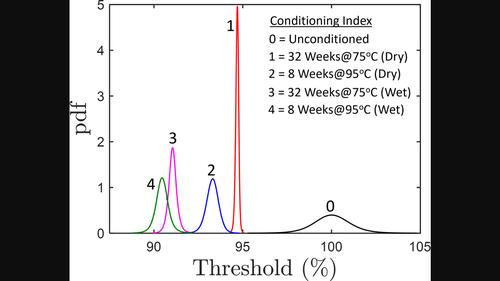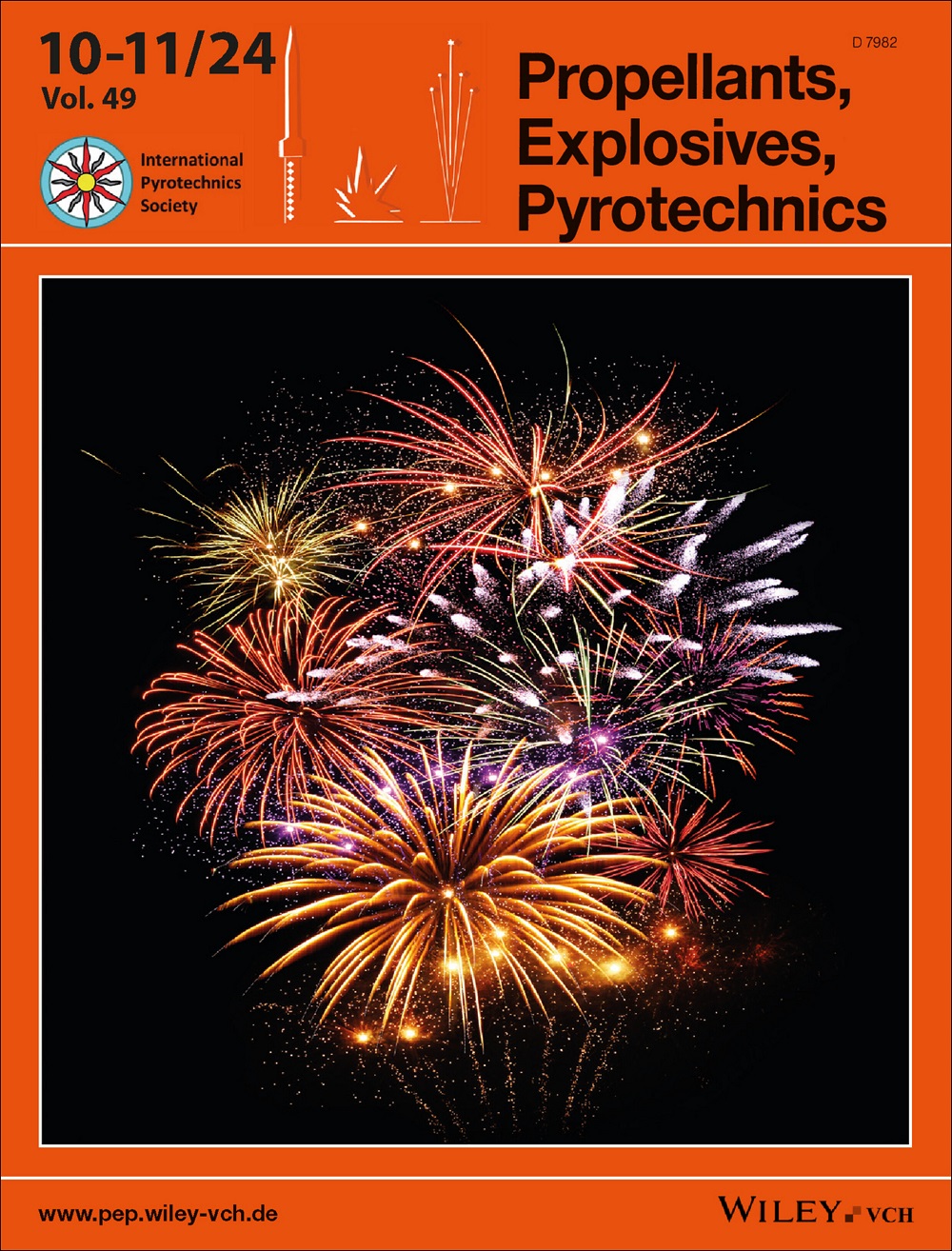Effect of thermal conditioning on the initiation threshold of secondary high-explosives
IF 2
4区 工程技术
Q3 CHEMISTRY, APPLIED
引用次数: 0
Abstract
While most performance metrics of high-explosive (HE) based devices like detonation velocity, detonation pressure, and energy output are expected to degrade over time, the evolution of initiation threshold appears less clear, with claims of both increasing and decreasing trends in threshold having been made in the literature. This work analyzes D-optimally designed sequential binary test data for a few thermally conditioned porous-powder and polymer-bonded HE initiator systems using a Bayesian likelihood method employing the probit regression model. We find that in most cases the initiation threshold decreases (i. e., sensitivity increases) upon accelerated thermal conditioning. However, such results are nuanced and influenced by factors like the contact area of initiating stimulus, HE characteristics like density and specific surface area, as well as possible thermally induced changes to other materials and interfaces involved.

热调节对二次高爆炸药起爆阈值的影响
虽然基于高爆(HE)装置的大多数性能指标,如起爆速度、起爆压力和能量输出,预计都会随着时间的推移而降低,但起爆阈值的演变似乎不太清楚,文献中既有关于阈值上升趋势的说法,也有关于阈值下降趋势的说法。本研究采用贝叶斯似然法,利用 probit 回归模型,分析了一些热条件多孔粉末和聚合物结合高爆炸药引发剂系统的 D-优化设计顺序二元试验数据。我们发现,在大多数情况下,加速热调节会降低引发阈值(即灵敏度增加)。然而,这种结果是有细微差别的,并受到各种因素的影响,如引发刺激的接触面积、高浓缩物的特性(如密度和比表面积),以及其他材料和界面可能因热引起的变化。
本文章由计算机程序翻译,如有差异,请以英文原文为准。
求助全文
约1分钟内获得全文
求助全文
来源期刊

Propellants, Explosives, Pyrotechnics
工程技术-工程:化工
CiteScore
4.20
自引率
16.70%
发文量
235
审稿时长
2.7 months
期刊介绍:
Propellants, Explosives, Pyrotechnics (PEP) is an international, peer-reviewed journal containing Full Papers, Short Communications, critical Reviews, as well as details of forthcoming meetings and book reviews concerned with the research, development and production in relation to propellants, explosives, and pyrotechnics for all applications. Being the official journal of the International Pyrotechnics Society, PEP is a vital medium and the state-of-the-art forum for the exchange of science and technology in energetic materials. PEP is published 12 times a year.
PEP is devoted to advancing the science, technology and engineering elements in the storage and manipulation of chemical energy, specifically in propellants, explosives and pyrotechnics. Articles should provide scientific context, articulate impact, and be generally applicable to the energetic materials and wider scientific community. PEP is not a defense journal and does not feature the weaponization of materials and related systems or include information that would aid in the development or utilization of improvised explosive systems, e.g., synthesis routes to terrorist explosives.
 求助内容:
求助内容: 应助结果提醒方式:
应助结果提醒方式:


